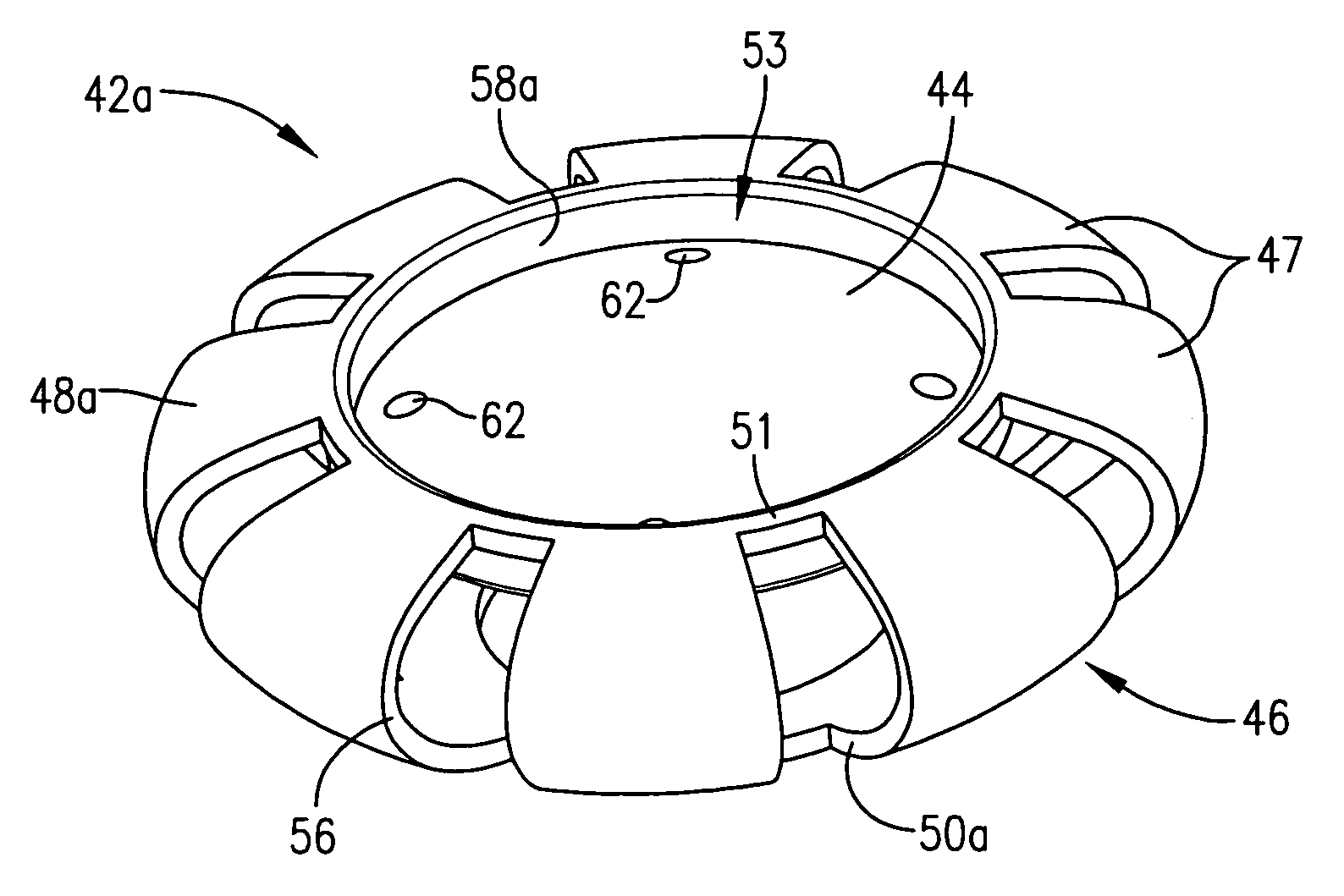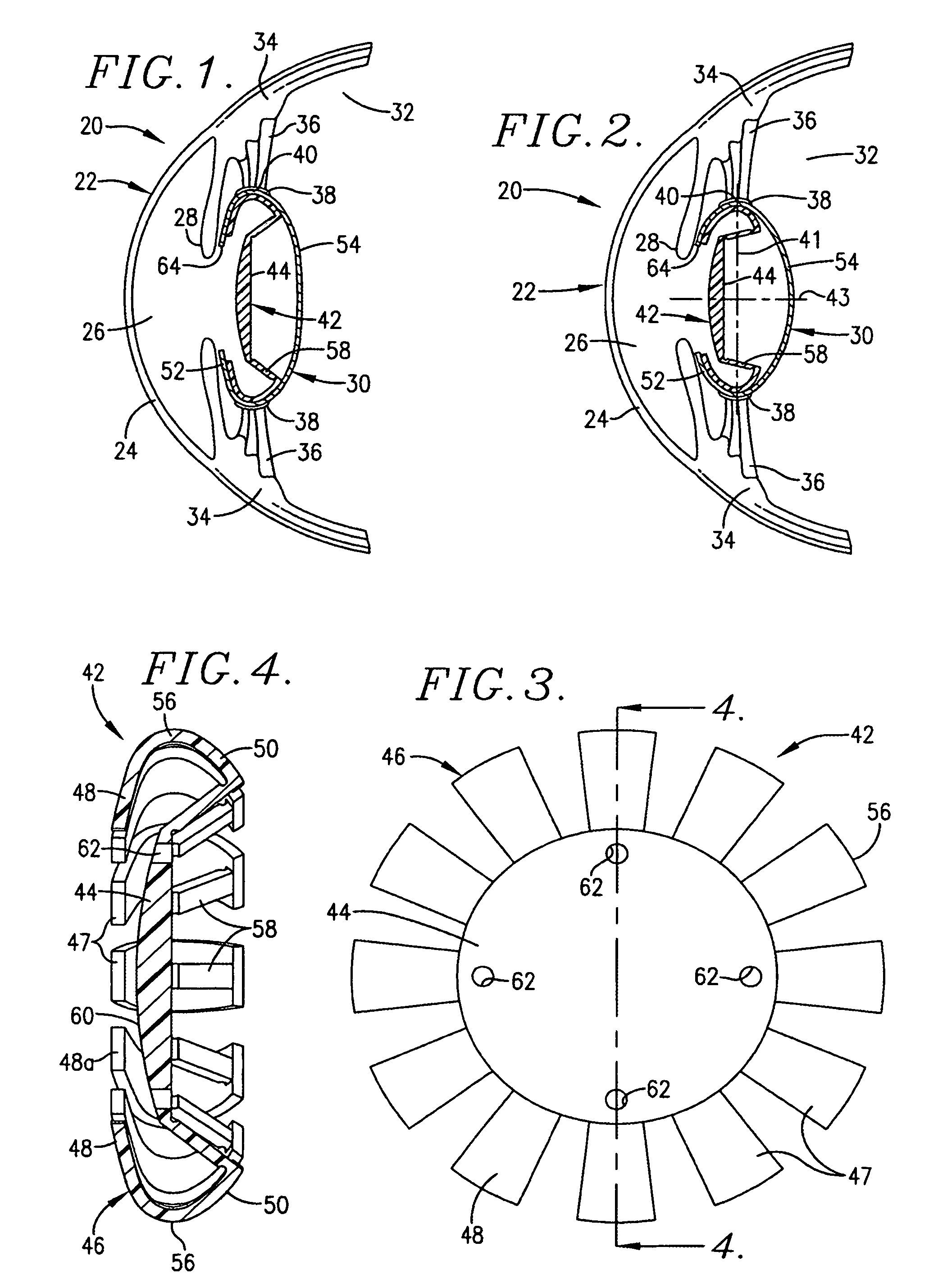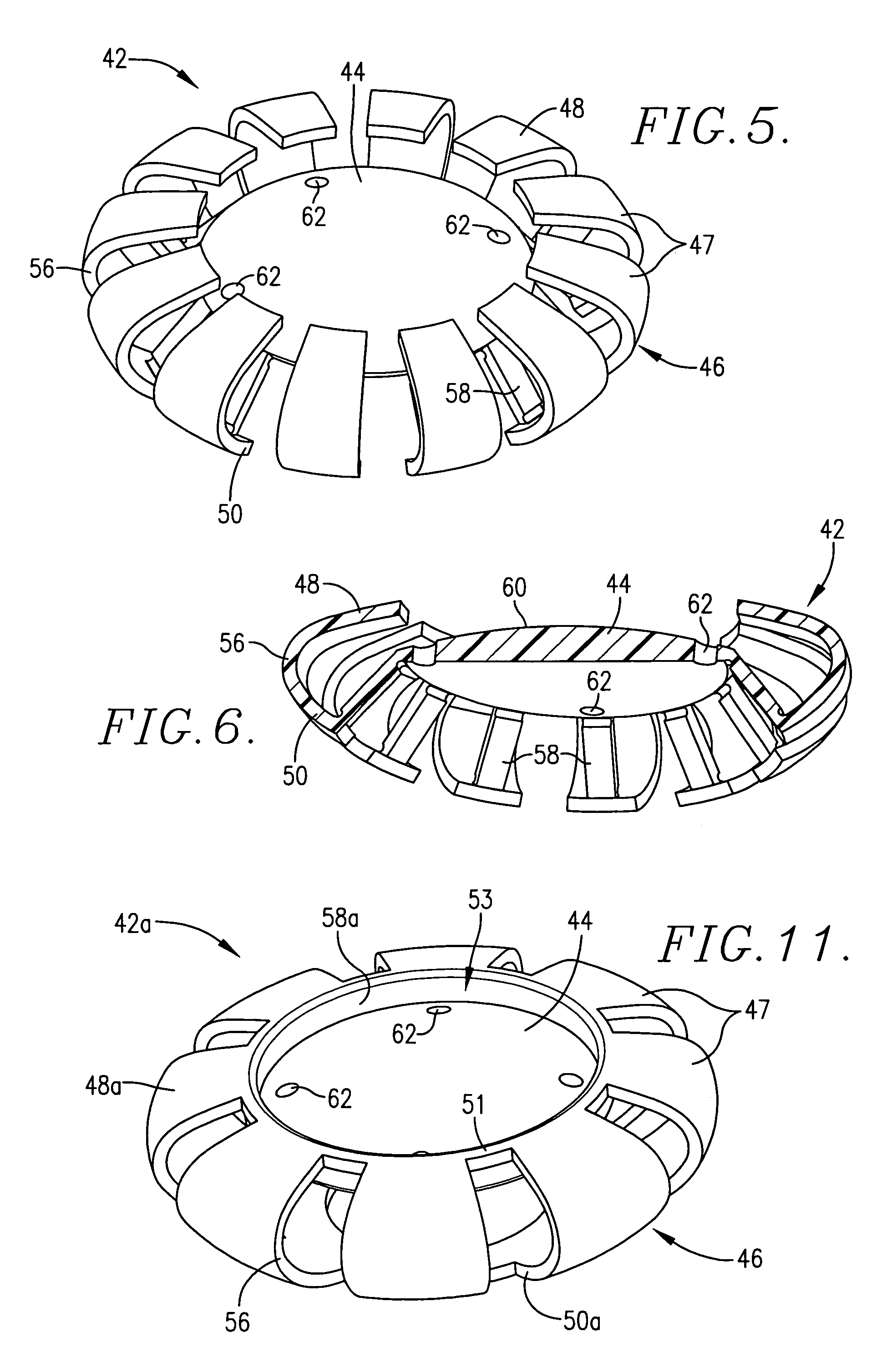Accommodating intraocular lens implant
a technology for intraocular lenses and implants, which is applied in the field of accommodating intraocular lenses, can solve the problems of fading vision, eventual blindness, and inability to accommodate, and achieve the effect of convenient inserting into the eye capsul
- Summary
- Abstract
- Description
- Claims
- Application Information
AI Technical Summary
Benefits of technology
Problems solved by technology
Method used
Image
Examples
Embodiment Construction
[0034]FIGS. 1 and 2 show the various components of the human eye pertinent to this invention. Briefly, the eye 20 includes a frontal portion 22 covered by a cornea 24 which encloses and forms an anterior chamber 26. The anterior chamber 26 contains aqueous fluid and is bounded at the rear by an iris 28. The iris 28 opens and closes to admit appropriate quantities of light into the interior portions of the eye 20. The eye 20 includes a capsule 30 which ordinarily contains the natural crystalline lens. When the eye 20 focuses, the capsule 30 changes shape to appropriately distribute the light admitted through the cornea 24 and the iris 28 to a retina (not shown) at the rearward portion of the eye 20.
[0035]The retina is composed of rods and cones which act as light receptors. The retina includes a fovea which is a rodless portion that provides for acute vision. The outside of the rearward or posterior portion 32 of the eye 20 is known as the sclera which joins into and forms a portion ...
PUM
 Login to View More
Login to View More Abstract
Description
Claims
Application Information
 Login to View More
Login to View More - R&D
- Intellectual Property
- Life Sciences
- Materials
- Tech Scout
- Unparalleled Data Quality
- Higher Quality Content
- 60% Fewer Hallucinations
Browse by: Latest US Patents, China's latest patents, Technical Efficacy Thesaurus, Application Domain, Technology Topic, Popular Technical Reports.
© 2025 PatSnap. All rights reserved.Legal|Privacy policy|Modern Slavery Act Transparency Statement|Sitemap|About US| Contact US: help@patsnap.com



